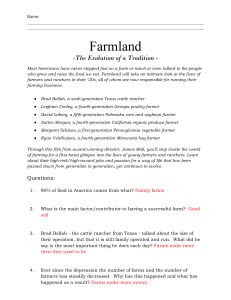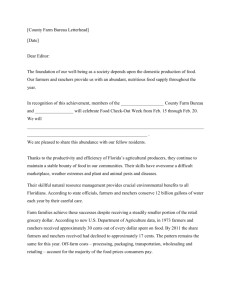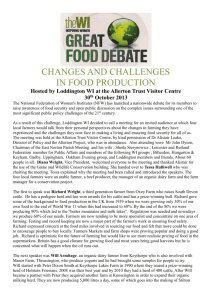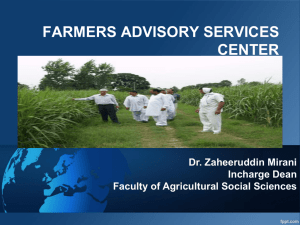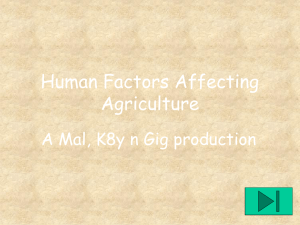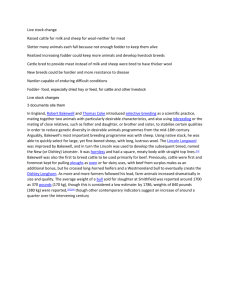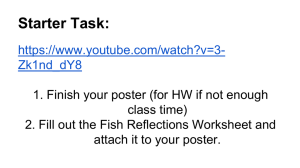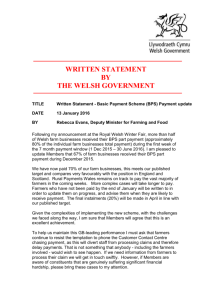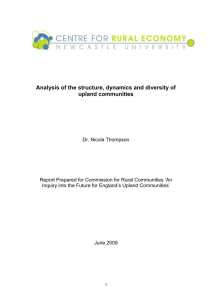Key
advertisement
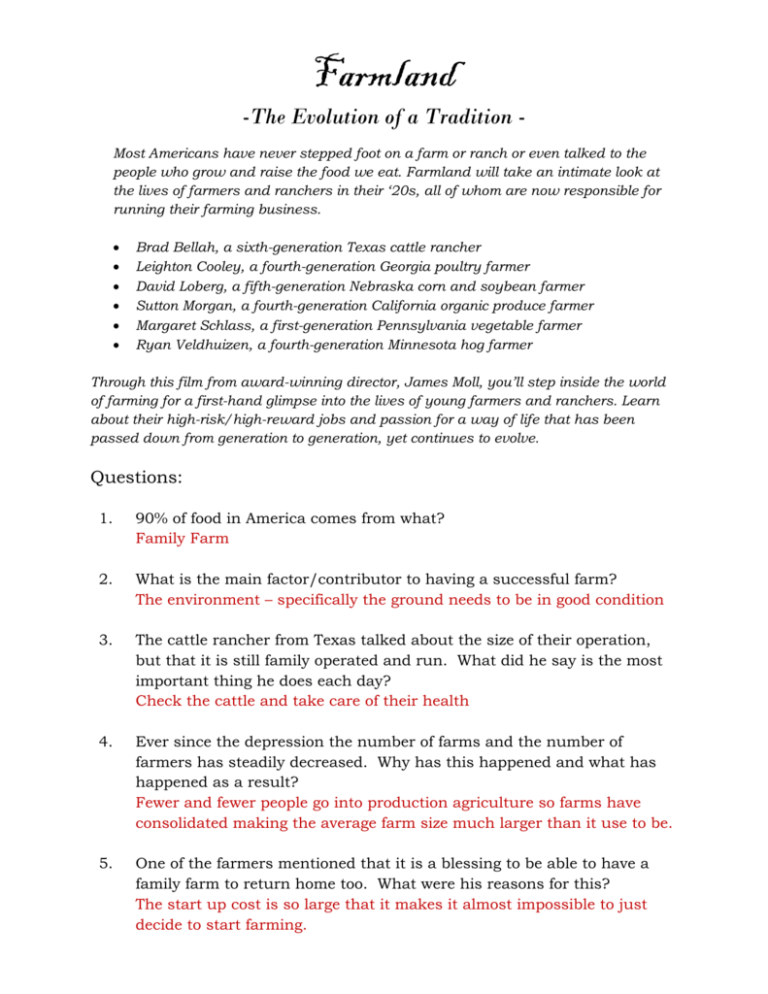
Farmland -The Evolution of a Tradition Most Americans have never stepped foot on a farm or ranch or even talked to the people who grow and raise the food we eat. Farmland will take an intimate look at the lives of farmers and ranchers in their ‘20s, all of whom are now responsible for running their farming business. Brad Bellah, a sixth-generation Texas cattle rancher Leighton Cooley, a fourth-generation Georgia poultry farmer David Loberg, a fifth-generation Nebraska corn and soybean farmer Sutton Morgan, a fourth-generation California organic produce farmer Margaret Schlass, a first-generation Pennsylvania vegetable farmer Ryan Veldhuizen, a fourth-generation Minnesota hog farmer Through this film from award-winning director, James Moll, you’ll step inside the world of farming for a first-hand glimpse into the lives of young farmers and ranchers. Learn about their high-risk/high-reward jobs and passion for a way of life that has been passed down from generation to generation, yet continues to evolve. Questions: 1. 90% of food in America comes from what? Family Farm 2. What is the main factor/contributor to having a successful farm? The environment – specifically the ground needs to be in good condition 3. The cattle rancher from Texas talked about the size of their operation, but that it is still family operated and run. What did he say is the most important thing he does each day? Check the cattle and take care of their health 4. Ever since the depression the number of farms and the number of farmers has steadily decreased. Why has this happened and what has happened as a result? Fewer and fewer people go into production agriculture so farms have consolidated making the average farm size much larger than it use to be. 5. One of the farmers mentioned that it is a blessing to be able to have a family farm to return home too. What were his reasons for this? The start up cost is so large that it makes it almost impossible to just decide to start farming. 6. All of the farmers discussed at one point why first generation farming is such a challenge. What are two of the reasons they gave? Price of land and infrastructure costs as well (equipment, seed, etc.) 7. Often time people underestimate the challenges of farming. One reason is that you have to buy seeds (input) a year in advance and that is without knowing what? The price you will receive for the product. 8. The phrase “assests get trapped” was used in the movie. What does that mean? In farming the largest percentage of expenses are out front/at the beginning – they must be incurred without having any idea what the market price will be. Farmers have good years, but must save for the bad years because they will happen too. 9. One of the families talked about the year there was snow through most of April. That really affects when they are able to get the seed into the ground. What is the ideal temperature trend for planting corn? 50 degrees and rising. 10. Farm vs. Business – while farming is a business, why did one of the farmers mention that he really prefers to use the term farm? Using the term farming or family farm has more of a personal touch too it. It is a business and must be run like a business, but there is a lot more that goes into it – the deep love and commitment that farmers and ranchers have to their land and their animals. 11. How does rain – too much or too little – in the Midwest affect the farmers in Texas? The majority of the corn that ranchers feed their chickens and their cattle comes from the Midwest. When the corn price is high is will affect the input cost of raising cattle and in turn the overall profit. 12. The market price can fluctuate quite a bit within a few weeks, but when cattle are ready the ranchers do not have the luxury of waiting. Why? When cattle are ready they might have a 1-2 week window at most, but then must get them sold regardless of what the market price is currently. 13. Just as we have choices as consumers, farmers also have choices for seed. What are some things they consider? The soil and the characteristics of the soil, growing season, consumer wants 14. Did you notice in the scene with the people in the tractors that they aren’t physically driving those tractors. How does that work? GPS 15. What is the biggest hurdle farmers face today? Public perception and social media issues. 16. David Loberg – the Nebraska corn and soybean farmer – said that if you don’t want to eat GMO products, that is your choice, but don’t do what? He talked about organic being a viable option because it is a choice that consumers have. But, he asked that people not vilify what other farmers are doing. 17. GMO seed provides a better defense against what? This also cuts down on the use of what? Insects and other pests. It cuts down on the use of chemicals. 18. The farm always comes FIRST . This is something many feel the general public does not understand unless they came from a farm. 19. In the discussion about Hormone Free Birds. This is really about what? All the poultry they were raising was hormone free, but someone got smart and decided to advertise that their birds were which led to the misconception that all others had hormones in them. 20. What did they feel the government needs to do a better job explaining? Explaining what organic and all-natural really mean. 21. What does using antibiotics “medicinally” mean? Only using antibiotics when an animal is sick – just as you would for people. In some operations if an animal receives antibiotics they then are moved to a different herd because they are no longer all natural. 22. What is the best way for farmers to get their story out? Telling people and showing people. 23. How do farmers learn about their animals and their health? The best way to learn is by watching and observing. 24. Why is it is so easy to publicize the “bad apples” of farming? Technology and social media makes it very simple to send the message that “all” are the same as the one bad story. 25. They shared the statistic that 80% of the land is owned by people 65 and older. Why does it become challenging to pass that land on to others? The taxes needed to pay on the land are very high. 26. Why do you really need to have a passion for farming if you are going to choose that as your life’s path? It is emotionally and physically hard. 27. The ending song was “This Land is Your Land”. What is the significance of this song? 28. In your opinion which of the farmers faces the most challenges and why do you think that? 29. What was the biggest eye opener for you in this movie? 30. What do you think is the biggest misconception the general public has about farmers?
